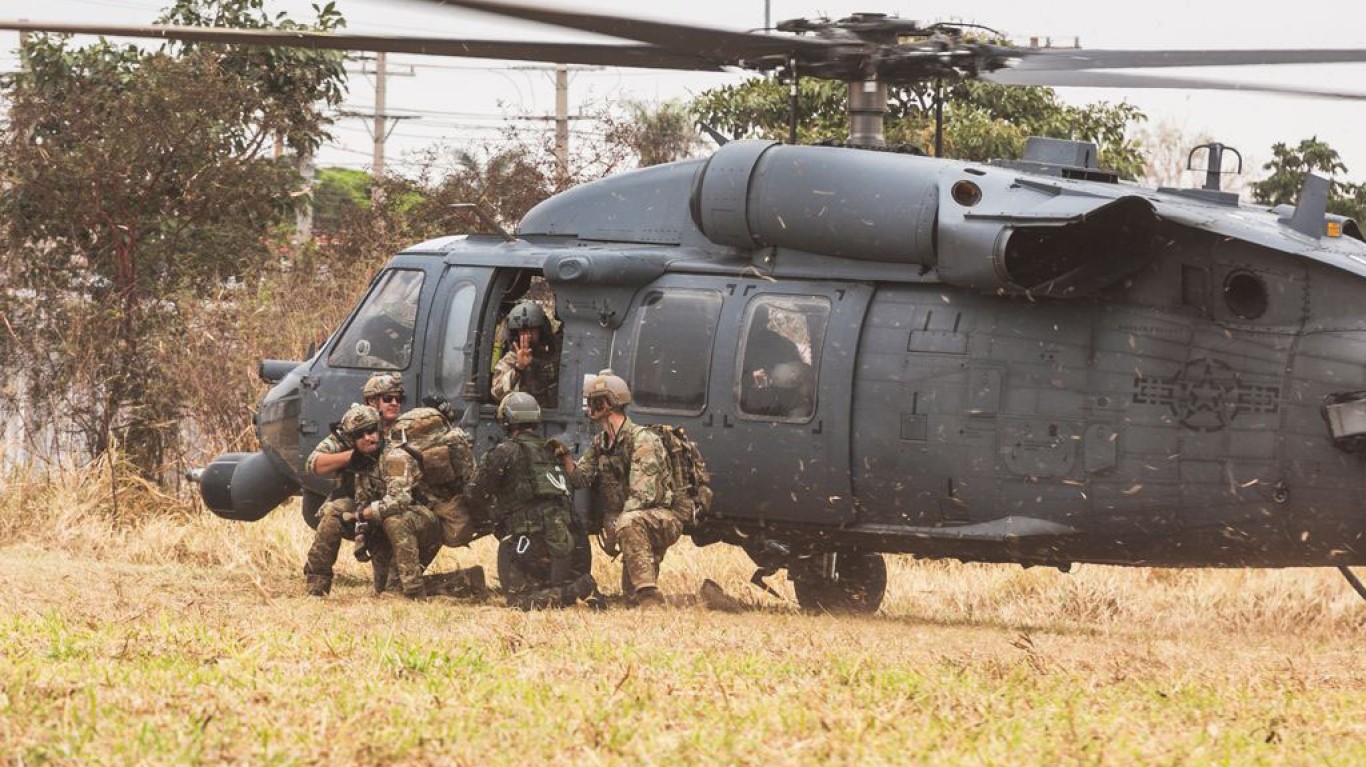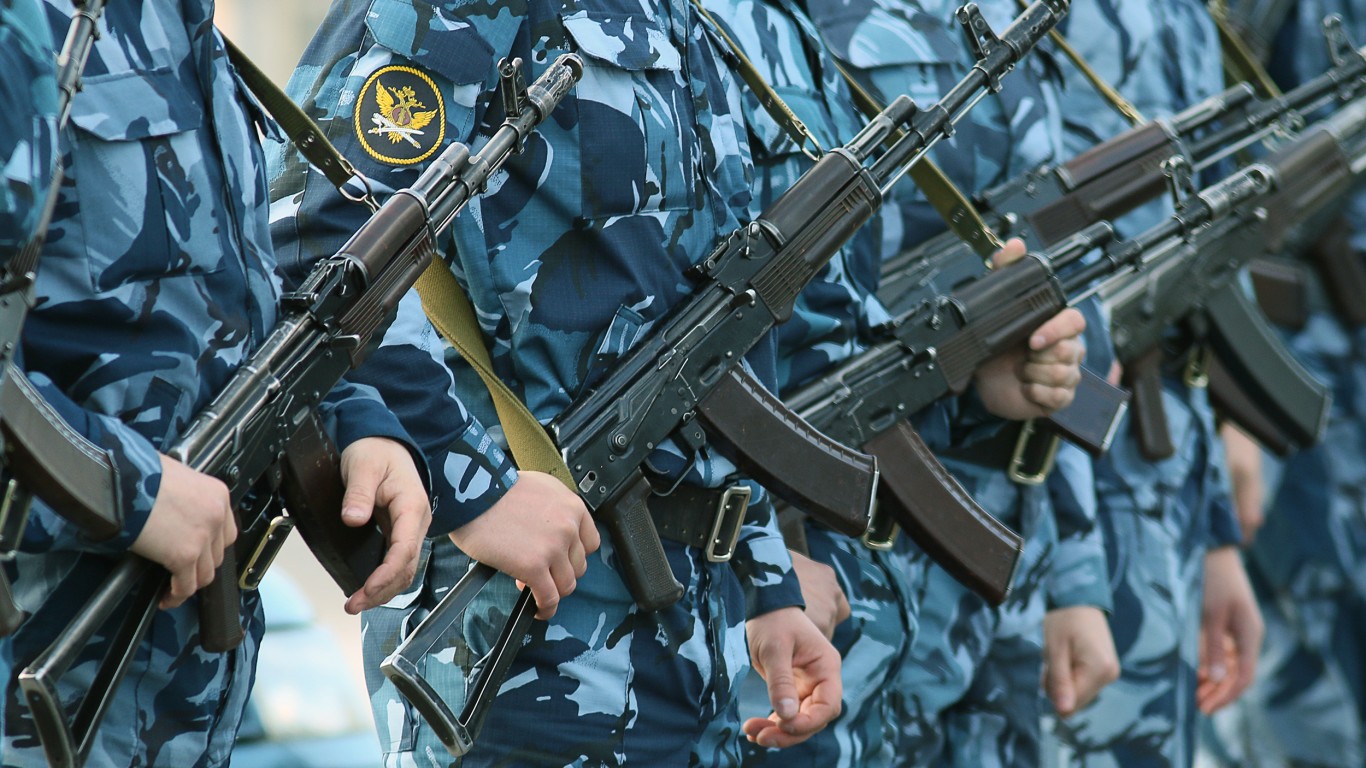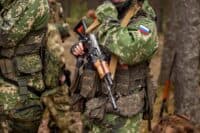
24/7 Wall St. Insights:
- The Brazilian Air Force, or FAB, operates over 600 aircraft, including advanced fighter jets, transport planes, and helicopters
- The FAB was founded in 1941 and quickly established itself during World War II, sending troops to Europe to assist in the Allies’ campaigns (primarily the Italian campaign)
- This early international involvement laid the groundwork for the development of a sophisticated air defense strategy and it opened up the potential for arms trade among other Allied nations
- Also: Discover “The Next NVIDIA”
Brazil’s dominance in South American air power is undeniable. As the largest air force in the region, the Brazilian Air Force, or FAB, operates over 600 aircraft, including advanced fighter jets, transport planes, and helicopters. Considering all this, the FAB stands as a formidable force above its other South American neighbors. (These are the 25 largest air forces on Earth.)
Among Brazil’s notable assets are the Saab Gripen fighters and Embraer EMB 314 Super Tucanos. These are some of the more advanced combat aircraft in Brazil’s arsenal. (Nearly 1,900 brand new models of this fighter jet are being built for the U.S. military.)
Brazil’s air superiority has deep roots in its history. The FAB was founded in 1941 and quickly established itself during World War II, sending troops to Europe to assist in the Allies’ campaigns (primarily the Italian campaign).
This early international involvement laid the groundwork for the development of a sophisticated air defense strategy. Not to mention, this involvement opened up the potential for arms trade among other Allied nations. Since then, Brazil has made a concerted effort to invest heavily in the modernization of its air force, far outpacing its South American neighbors.
Currently, Brazil’s air force is focused on defense as well as humanitarian and peacekeeping missions. However, Brazil is not the only nation in South America with a strong air force. Although Brazil ranks as the strongest in air power, other nations like Argentina or Chile have formidable air forces as well.
24/7 Wall St. is taking a closer look at the air forces of South America. To determine the South American countries with the most military aircraft, 24/7 Wall St. reviewed the 2024 military strength report from Global Firepower, an annually updated defense-related statistics website with information on 145 countries. We ranked these countries according to which countries have the most aircraft. We included supplemental information regarding each country’s current air force and overall military strength ranking. Nations that did not have any military aircraft were excluded.
Here is a look at the largest air forces in South America:
Why Are We Covering This?

Understanding the military dynamics of South America is important considering the region’s evolving geopolitical landscape and its strategic importance. Historically, South America has experienced internal conflicts and border tensions, but its military presence is now key in maintaining regional stability and security.
11. Suriname
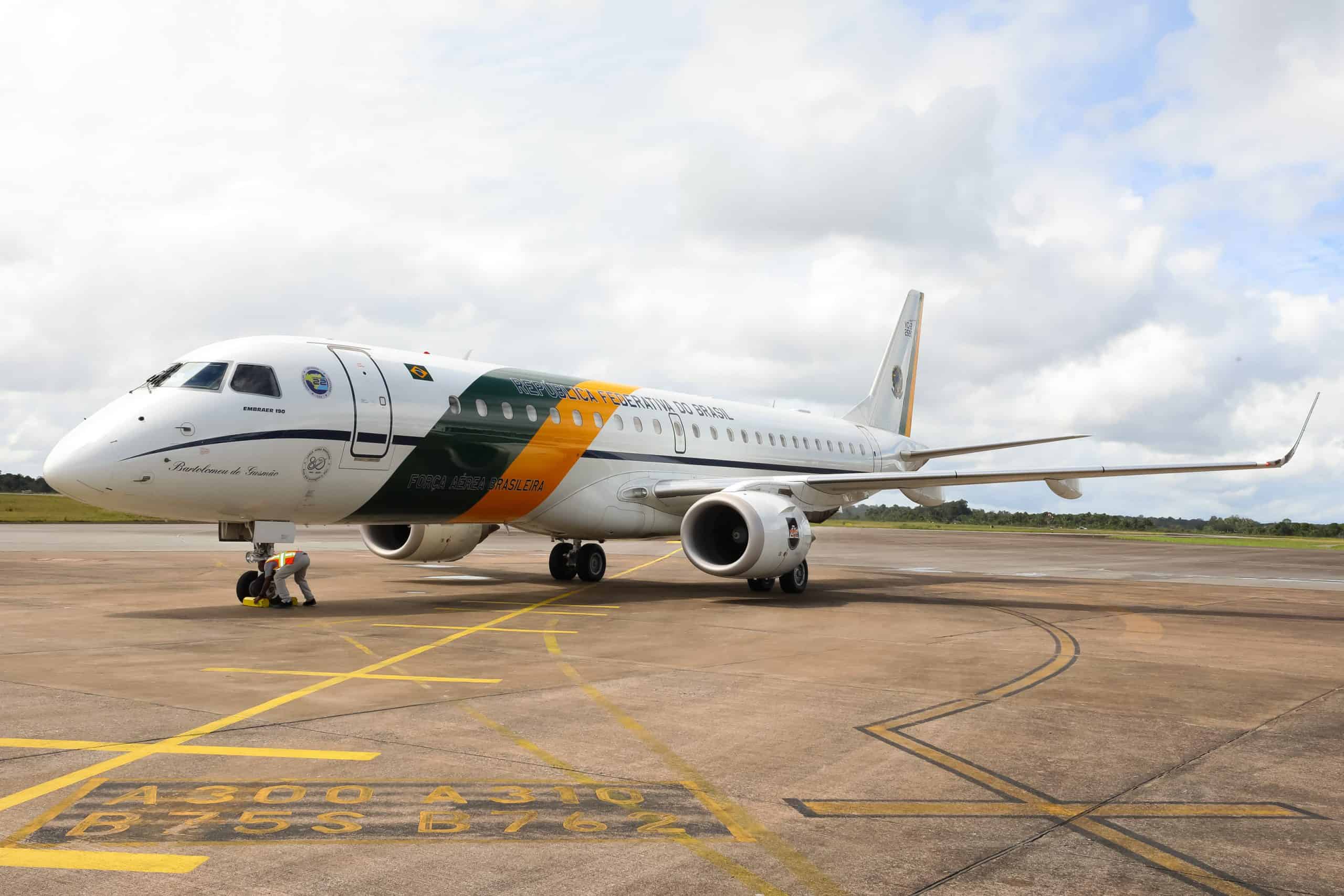
- Total military aircraft: 3
- Total fighter and interceptor aircraft: 0
- Total strike and attack aircraft: 0
- Total helicopters: 3
- Total attack helicopters: 0
- Military strength score and world rank: 3.9038 – #143 out of 145
Suriname only has 3 military aircraft and less than 700 military vehicles. Currently there are only about 2,000 active military personnel for this country of just over 600,000. It is by far one of the smallest military forces in South America. Its aircraft, vehicles, and personnel are largely reflective of this.
Despite not mustering a sizable military force, the rule of the people persists. However, what forces Suriname does have train with U.S. Armed forces, notably the South Dakota National Guard as part of a State Partnership Program.
It should be noted that Suriname’s military history was largely shaped by its colonial past, only gaining independence from the Netherlands in 1975. The country came under civilian rule for a few years, but a military coup in 1980, known as the “Sergeants Coup”, reshaped the government and marked the beginning of military rule for some time. It would not be the only coup, but it would impact how the people view the military for years to come.
After returning to democratic rule in the 1990s, Suriname looked to decrease the military’s influence, which explains the state of its military today.
10. Paraguay
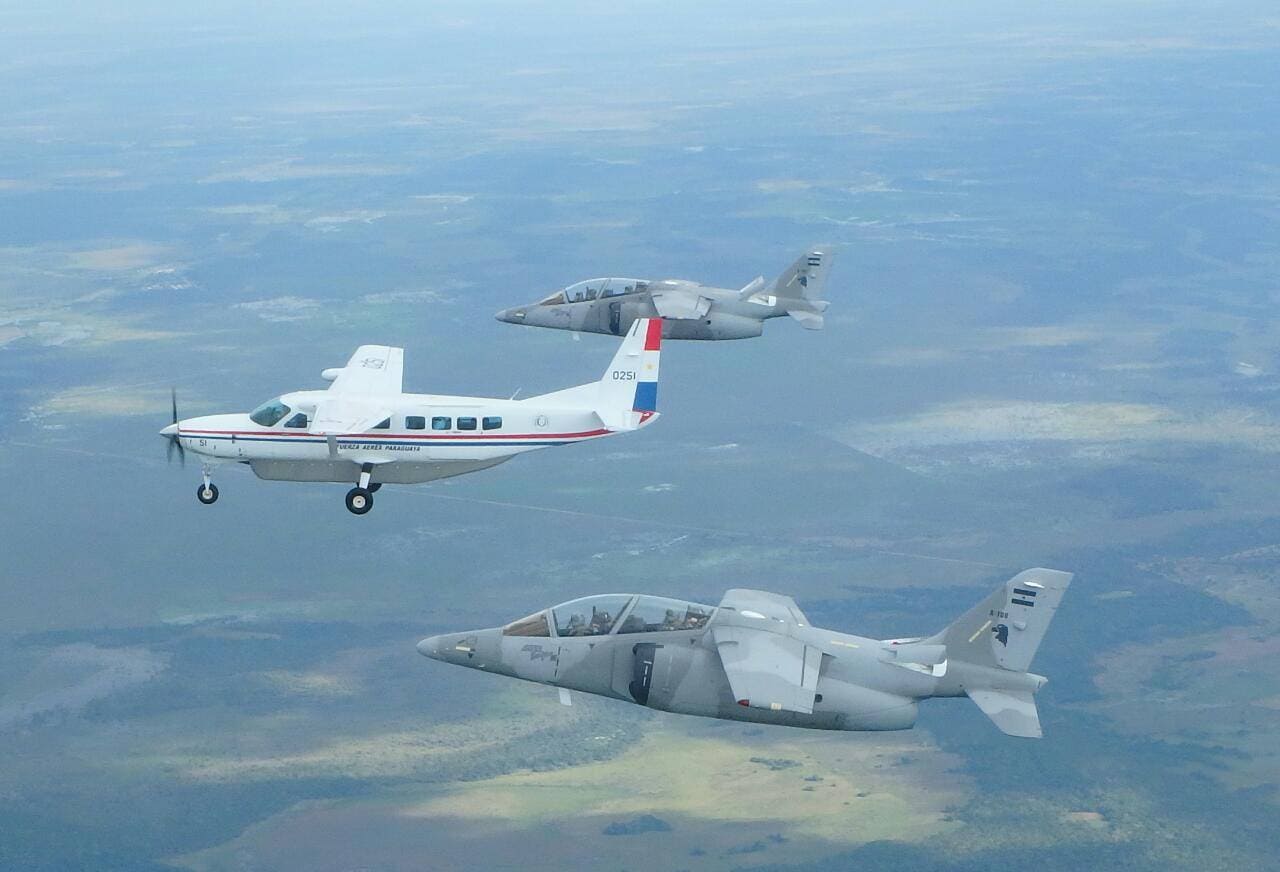
- Total military aircraft: 41
- Total fighter and interceptor aircraft: 0
- Total strike and attack aircraft: 0
- Total helicopters: 14
- Total attack helicopters: 0
- Military strength score and world rank: 1.7053 – #85 out of 145
Currently, Paraguay has over 40 military aircraft. Of these, 14 are helicopters and the rest play in logistical or support roles. The military as a whole has about 2,000 active personnel, coming from a total population of just under 7.5 million people.
For some historical context, after gaining independence in 1811, Paraguay’s military played a big role in the country’s defense, especially during the War of the Triple Alliance in the later 1800s. Since then, the military became more involved in state affairs, especially during the 20th century. And like many other South American countries, Paraguay’s military has been closely tied with its politics.
This led to the dictatorship of General Alfredo Stroessner, who took control in 1954 and ruled until 1989. It wasn’t until Stroessner was overthrown that Paraguay began its slow journey back to democracy, diminishing the influence of the military over the years.
As it stands now, the Paraguayan military is now more internally focused on defense and maintaining security within the country. And as such, Paraguay doesn’t need a large force to accomplish its objectives.
9. Uruguay

- Total military aircraft: 43
- Total fighter and interceptor aircraft: 0
- Total strike and attack aircraft: 7
- Total helicopters: 12
- Total attack helicopters: 0
- Military strength score and world rank: 1.9695 – #96 out of 145
Uruguay currently operates 43 military aircraft. Out of these, 12 are helicopters and 7 are strike or attack aircraft, the rest play in logistical or support roles. As a whole, Uruguay has a standing army of about 25,000 active personnel coming from a total population of around 3.5 million.
In the 20th century, Uruguay was subject to military rule, most notably during the Bordaberry dictatorship starting in 1973, when the military seized control of the government in response to political instability. Democracy was restored in 1985, and like Suriname, the government moved to reduce the influence of the military.
One of the main shifts from the militaristic rule was repurposing Uruguay’s armed forces to a more passive and defensive role. Instead of trying to project power, Uruguay’s military is typically more involved in disaster relief, peacekeeping missions, and internal security.
8. Bolivia

- Total military aircraft: 63
- Total fighter and interceptor aircraft: 0
- Total strike and attack aircraft: 0
- Total helicopters: 32
- Total attack helicopters: 0
- Military strength score and world rank: 1.4851 – #82 out of 145
Bolivia’s air force includes 63 military aircraft, with more than half of this force being made up of helicopters. For a country of 12 million people, it has active military personnel totaling 40,000 troops.
Bolivia’s military has played a central role in the direction of the country since gaining its independence in 1825 from Spain. The War of the Pacific was a notable moment in military history for the country as it lost its Pacific coastline to Chile in 1884. The military would go on to be heavily influential on the country’s direction in the 20th century.
During this time, the Bolivian military frequently intervened in politics, with multiple coups and military governments. One of the most significant periods of military rule was under General Hugo Banzer, who led a dictatorship from 1971 to 1978. However, a return to democracy in the early 1980s would also come with a weaker military influence.
This shift repurposed the military’s role to be more focused on national defense and internal security.
7. Ecuador
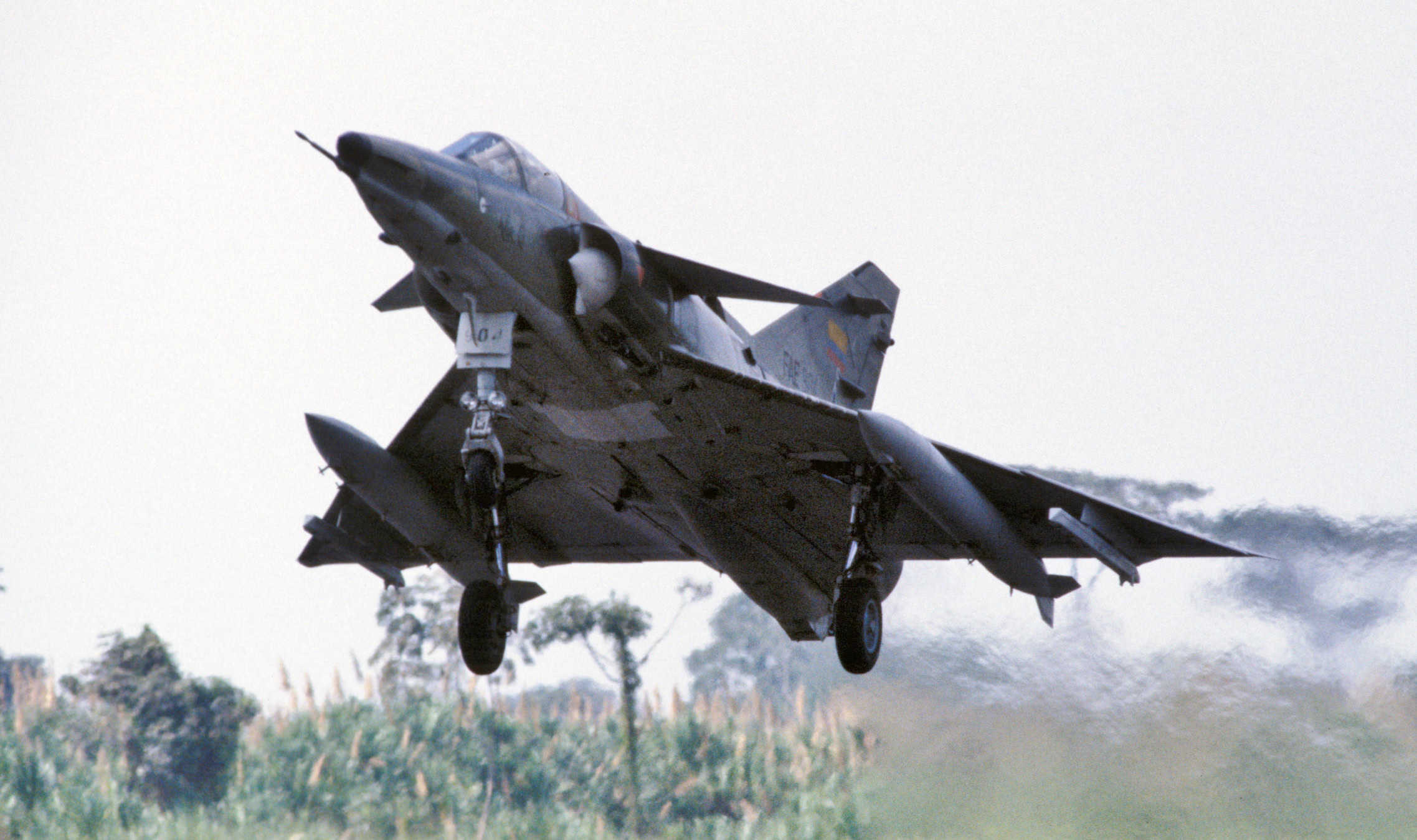
- Total military aircraft: 110
- Total fighter and interceptor aircraft: 0
- Total strike and attack aircraft: 0
- Total helicopters: 52
- Total attack helicopters: 0
- Military strength score and world rank: 1.2388 – #72 out of 145
For a country with a population of 18 million, Ecuador operates a fairly sizable military force with 41,000 active personnel. It has 110 military aircraft and over 5,600 military vehicles. Almost half of its air force is made up of helicopters.
Throughout the 20th century, Ecuador experienced multiple military coups, most notably in 1972 when General Guillermo Rodríguez Lara took control of the government. His rule lasted until 1979, when the country shifted back to democratic rule. However, like many other South American countries, the people were wary of military power.
Today, the main responsibilities of Ecuador’s military are protecting its national sovereignty, addressing security threats like drug trafficking, and providing disaster relief where needed.
6. Argentina

- Total military aircraft: 229
- Total fighter and interceptor aircraft: 24
- Total strike and attack aircraft: 10
- Total helicopters: 90
- Total attack helicopters: 0
- Military strength score and world rank: 0.3823 – #28 out of 145
Argentina’s armed forces rank as some of the strongest overall in the world. The country boasts nearly 22,000 military vehicles and over 200 military aircraft. It has 90 helicopters at its disposal as well as a handful of strike and interceptor aircraft.
Throughout the 20th century, Argentina suffered through multiple wars and dictatorships. This largely crafted how the Argentine Armed Forces handles itself today.
One of the most infamous instances was the Dirty War that took place from 1976 to 1983. General Jorge Rafael Videla overthrew the government and, through the military, targeted people it suspected of opposing the government, resulting in the disappearance, torture, and death of thousands. This was part of a larger collaboration, Operation Condor, between dictatorships across the continent.
Ultimately, this dictatorship would come crashing down when Argentina fought the Falklands War against the United Kingdom. The defeat was a major blow to the dictatorship and resulted in the people turning against the government and back towards democratic rule. With this push, the military waned in influence in the decades to come.
5. Venezuela

- Total military aircraft: 242
- Total fighter and interceptor aircraft: 40
- Total strike and attack aircraft: 0
- Total helicopters: 75
- Total attack helicopters: 10
- Military strength score and world rank: 0.9447 – #57 out of 145
Currently, Venezuela has roughly 240 military aircraft and 15,000 military vehicles in general. These consist of 75 helicopters and 40 fighter and interceptor aircraft. In terms of its ground forces, Venezuela has a sizable military totaling nearly 110,000 active personnel, but this is dwarfed by its paramilitary forces numbering around 220,000. Much of these paramilitary forces like the Bolivarian Militia are made up of citizens.
This country in particular is an interesting case study in militaries in South America. Some might argue that Venezuela is still under military rule, and that it has not returned to democratic rule like other nations on the continent.
Although the country had returned to democratic rule in the 1950s after suffering a number of coups and instability, it would ultimately revert back in 1999 when Hugo Chavez rose to power. Chavez was a former military officer and gained popularity with the citizenry, enough to create a citizen militia that blurred the lines between politics and military.
Chavez’s successor, Nicolas Maduro, is currently in power and he is seeking a third term as the President of Venezuela. Again, critics will argue the electoral process in Venezuela is less than transparent. However, one thing Maduro has done is grow the military.
4. Peru

- Total military aircraft: 258
- Total fighter and interceptor aircraft: 16
- Total strike and attack aircraft: 22
- Total helicopters: 95
- Total attack helicopters: 16
- Military strength score and world rank: 0.8475 – #53 out of 145
Currently, the Peruvian military consists of 120,000 active personnel that operate over 250 military aircraft. Peru flies over 90 helicopters, with 16 of these being designated as attack helicopters. There are 16 fighter and interceptor aircraft as well as 22 strike and attack aircraft.
Peru has a long military history, including several coups and times of military rule. These events helped shape the Peruvian Armed Forces into what they are today, with more of a focus on security and defense. Even though the military now has a smaller role, it is still one of the stronger forces in South America.
General Juan Velasco Alvarado held power over the country between 1968 and 1980, ultimately implementing land reforms and nationalizing key industries. Ironically, Velasco was overthrown in another military coup by General Francisco Morales Bermudez, who actually moved the country back towards a democracy.
In recent decades, the Peruvian military was involved in counterinsurgency operations, notably against the Shining Path, a far-left guerilla group. While the government eventually cut down the group’s influence, the Peruvian military continues to combat what’s left of the group in remote areas of the country. Outside of that, Peru’s military primarily operates in peacekeeping missions and disaster relief.
3. Chile

- Total military aircraft: 289
- Total fighter and interceptor aircraft: 45
- Total strike and attack aircraft: 0
- Total helicopters: 85
- Total attack helicopters: 0
- Military strength score and world rank: 0.8128 – #52 out of 145
Currently, Chile’s military has around 290 military aircraft. There are over 80 helicopters in the service as well as 45 fighter and interceptor aircraft. It is easily one of the most powerful air forces in South America. Like many of its neighbors, Chile has an interesting history of military and politics.
Known as one of the most brutal dictators of South America, General Augusto Pinochet took control of the Chilean government in 1973. Pinochet ruled as a military dictator until 1990, with many human rights abuses and political repression. The military also saw a massive expansion during this time adding tanks and aircraft to its arsenal.
Pinochet was also famous for his involvement in Operation Condor, where dictatorships across the continent moved to snuff out or suppress their political rivals in a collaborative effort. This covert operation would ultimately strengthen the military’s grasp over Chile and any dissidents that might oppose it.
After Pinochet lost power in 1990, the military was relegated to a much lesser role. Since then, the military has focused more on national security as well as disaster relief, especially since Chile is prone to natural disasters like earthquakes and tsunamis.
2. Colombia
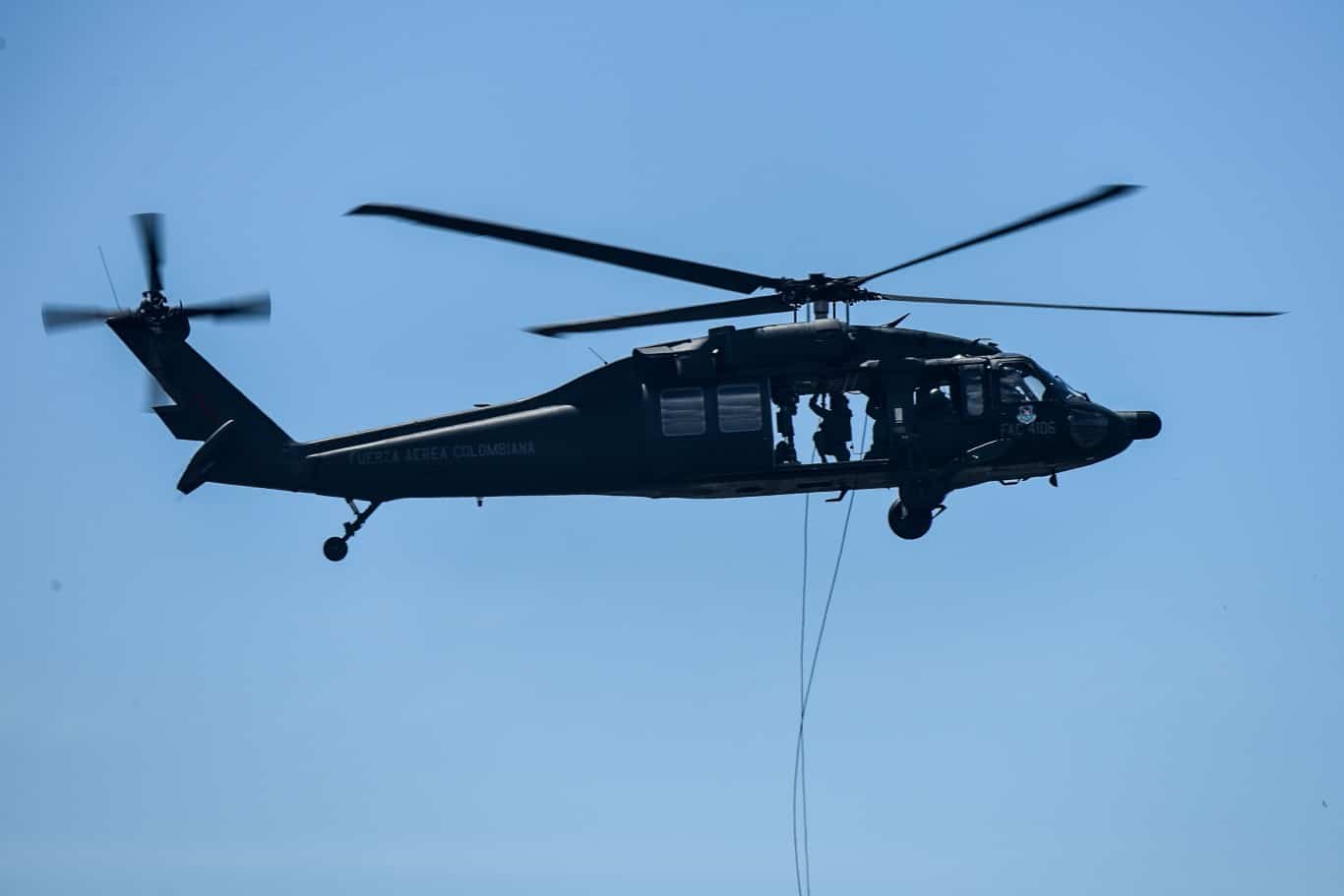
- Total military aircraft: 434
- Total fighter and interceptor aircraft: 17
- Total strike and attack aircraft: 24
- Total helicopters: 258
- Total attack helicopters: 0
- Military strength score and world rank: 0.7347 – #44 out of 145
Colombia has over 2.700 military vehicles and over 290,000 active military personnel. This country is also home to the largest helicopter force on the continent. In total it has over 430 military aircraft, and 258 of these are helicopters. Colombia has a handful of interceptor and fighter aircraft as well as over 20 strike and attack aircraft.
Colombia’s military has played a significant role in shaping the country’s politics, and even now it is one of the largest forces in South America. While other nations are mainly focused on peacekeeping and national security, Colombia has a very distinct focus on counterinsurgency and jungle warfare.
For decades Colombia’s military has been fighting against far-left guerrilla groups like the FARC and ELN. The military has been in conflict with FARC since the 1960s, until recently when the group signed a peace agreement and disbanded. The ELN still continues to carry out attacks, and is considered to be one of the last guerrilla groups active in Colombia.
Currently, Colombia’s military continues to fight drug cartels and protect its borders. While it does some international peacekeeping missions, its focus is mainly internal.
1. Brazil
- Total military aircraft: 628
- Total fighter and interceptor aircraft: 46
- Total strike and attack aircraft: 72
- Total helicopters: 195
- Total attack helicopters: 0
- Military strength score and world rank: 0.1944 – #12 out of 145
Currently, Brazil operates the largest military force in South America, not to mention the largest air force as well. It has over 600 military aircraft at its disposal with nearly 200 of these being helicopters. Brazil has 46 fighter and interceptor aircraft, as well as, 72 strike and attack aircraft.
Out of all the countries in South America, Brazil is considered to have the strongest military force. Officially known as the Brazilian Armed Forces, it consists of three branches, Army, Navy, and Air Force. Like every other nation on this list, Brazil had its brush with coups and military dictatorships.
One of the most important periods in time for this country began in 1964, when the military took control of the government. In the wake of the coup, the military regime carried out countless human rights abuses and censored its people. By 1985, Brazil returned to a civilian government but unlike its neighbors, the military still held significant sway for some time.
Now, Brazil’s military is primarily focused on national defense. It has conducted peacekeeping missions with the United Nations to countries like Haiti and Lebanon. The military also works to protect the Amazon rainforest from illegal activities like deforestation or drug trafficking.
Get Ready To Retire (Sponsored)
Start by taking a quick retirement quiz from SmartAsset that will match you with up to 3 financial advisors that serve your area and beyond in 5 minutes, or less.
Each advisor has been vetted by SmartAsset and is held to a fiduciary standard to act in your best interests.
Here’s how it works:
1. Answer SmartAsset advisor match quiz
2. Review your pre-screened matches at your leisure. Check out the advisors’ profiles.
3. Speak with advisors at no cost to you. Have an introductory call on the phone or introduction in person and choose whom to work with in the future
Thank you for reading! Have some feedback for us?
Contact the 24/7 Wall St. editorial team.
